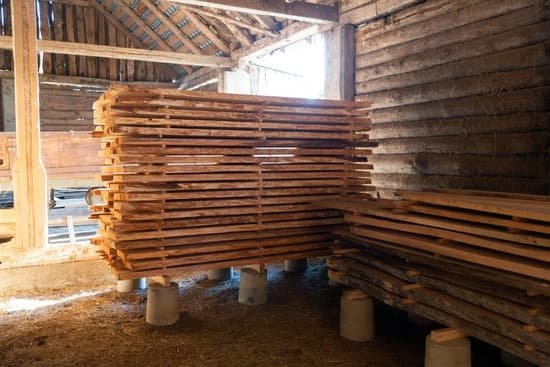For centuries, hand tool woodworking has been revered as a true art form. In a world where power tools dominate, the simplicity and precision of using hand tools to shape and join wood is a skill that is both timeless and rewarding. Whether you are a seasoned woodworker or just beginning your journey into this craft, creating a hand tool woodworking shop is essential for honing your skills and embracing the true artistry of woodworking.
In this article, we will explore the various aspects of setting up and optimizing your hand tool woodworking shop. From designing the perfect layout to choosing the right workbench and essential hand tools, we will guide you through the process step by step. We will also delve into safety precautions, efficient workflow techniques, mastering hand tool techniques, and even joining clubs and workshops to build a community of like-minded artisans.
Embracing the art of hand tool woodworking goes beyond simply creating functional pieces; it allows you to connect with the rich history of craftsmanship while developing your own unique style. Whether you aspire to create intricate furniture or delicate wooden sculptures, this article will provide you with all the information you need to embark on this fulfilling journey. So let’s dive in and discover the world of hand tool woodworking – where creativity meets tradition, and craftsmanship reigns supreme.
The Perfect Setup
Designing the layout and setup of your hand tool woodworking shop is essential to creating a functional and efficient workspace. A well-designed shop will not only make it easier for you to work on your projects, but it will also enhance your overall woodworking experience. In this section, we will explore some key considerations and tips for designing the perfect setup for your hand tool woodworking shop.
Consider Your Space
Before you start designing your woodworking shop, it’s important to consider the space you have available. Assess the dimensions of the room or area where you plan to set up your shop and take note of any limitations or obstacles that may affect your layout. For example, if you have low ceilings, you may need to adjust the height of your workbenches or shelves accordingly.
Bench Placement
The workbench is the heart of any hand tool woodworking shop, so it’s crucial to give careful thought to its placement. Ideally, your workbench should be positioned in a central location that allows for easy movement around it. This will ensure that you have ample space to maneuver long boards or large projects while working with your hand tools. Additionally, consider placing your workbench near a natural light source such as a window to maximize visibility.
Storage Solutions
Having efficient storage solutions is key in maintaining an organized and clutter-free workshop. Consider incorporating various storage options such as wall-mounted racks, pegboards, and shelving units to keep your tools and materials neatly organized and easily accessible. Additionally, customizing storage solutions based on the size and quantity of tools you own can help optimize space utilization in your workshop.
By carefully considering these factors when designing the setup of your hand tool woodworking shop, you can create a space that promotes productivity, organization, and enjoyment in pursuing this art form. Remember that every woodworker has unique preferences and needs when it comes to their workspace, so feel free to experiment and adapt these suggestions to suit your individual style. With a well-designed shop, you’ll be able to fully immerse yourself in the artistry of hand tool woodworking.
Essential Hand Tools for a Well-Equipped Woodworking Shop
To have a well-equipped woodworking shop, it is important to have a collection of essential hand tools. These tools allow you to create precise and intricate designs, and they are integral to the art of hand tool woodworking. Some of the must-have hand tools for your woodworking shop include:
- Hand planes: Hand planes are versatile tools that can shape and smooth wood surfaces. They come in different types and sizes, such as block planes, smoothing planes, and jack planes. Having a few different hand planes will enable you to tackle various woodworking tasks with ease.
- Chisels: Chisels are essential for cutting and shaping wood by hand. They can be used for creating mortises, detailing carvings, or removing excess wood material. Investing in a set of high-quality chisels with different widths will give you more versatility in your woodworking projects.
- Handsaws: A good handsaw is necessary for cutting wood accurately by hand. There are several types of handsaws available, including panel saws, tenon saws, and dovetail saws. Each type has its own specific use, so it’s beneficial to have a selection of handsaws in your workshop.
- Marking and measuring tools: Precision is key in woodworking, so having marking and measuring tools is crucial for accurate work. Tools such as marking gauges, combination squares, bevel gauges, and tape measures help ensure that your measurements are correct before making cuts or joinery.
- Sharpening tools: Keeping your hand tools sharp is essential for efficient woodworking. Invest in sharpening stones or systems to maintain the sharpness of your chisels, plane irons, and other cutting tools.
Having these essential hand tools in your woodworking shop will lay the foundation for successful projects and allow you to work efficiently with precision and artistry.
| Hand Tool | Function |
|---|---|
| Hand plane | To shape and smooth wood surfaces. |
| Chisels | To cut and shape wood by hand. |
| Handsaws | To accurately cut wood by hand. |
| Marking and measuring tools | To ensure precision in woodworking through accurate measurements. |
| Sharpening tools | To maintain the sharpness of cutting tools for efficient woodworking. |
Choosing the Right Workbench for Hand Tool Woodworking
Introduction
The workbench is the centerpiece of any woodworking shop, and for hand tool woodworkers, it holds even greater significance. A well-designed and properly chosen workbench can enhance your woodworking experience, improve your efficiency, and allow you to fully utilize the capabilities of your hand tools. In this section, we will explore the key factors to consider when choosing the right workbench for hand tool woodworking.
The Anatomy of a Hand Tool Woodworking Bench
A traditional hand tool woodworking bench differs from other types of workbenches in its construction and features. It typically has a solid wood top, hefty weight for stability, and a sufficient length and width to accommodate various projects. The top should be thick enough to withstand heavy planing without excessive vibration or deflection.
Additionally, a good hand tool woodworking bench usually includes vises or clamps that securely hold your workpieces in place. These may include a face vise at one end for edge planing or joinery tasks, as well as a tail vise or end vise that allows you to hold boards horizontally or vertically. A shoulder vise is another handy feature that can effectively secure narrow pieces during mortise-and-tenon joinery.
Considerations When Choosing a Workbench
- Size: Ensure that the workbench provides ample workspace for your projects while fitting comfortably in your workshop. Consider both the overall dimensions and the size of the tabletop surface.
- Material: Select a bench made from solid hardwood such as maple or beech; these species are known for their durability and resistance to wear and tear.
- Stability: Look for a sturdy bench that doesn’t wobble or rock when you apply pressure with your hand tools. This is especially important when using chisels or doing hand plane work.
- Storage: Think about the storage capacity of the workbench. Some models include built-in drawers, shelves, or cabinets that can hold your hand tools, clamps, and other accessories.
- Versatility: Consider whether the workbench design accommodates a variety of woodworking techniques and projects. It should provide enough flexibility for both small-scale tasks like dovetailing and larger projects such as table construction.
Choosing the right workbench is crucial for hand tool woodworkers to effectively practice their craft. By considering factors such as size, material, stability, storage, and versatility, you can select a workbench that meets your specific needs and enhances your woodworking experience. A well-chosen workbench will not only provide a solid foundation for your projects but also contribute to an efficient workflow in your hand tool woodworking shop.
Creating a Efficient Workflow in Your Hand Tool Woodworking Shop
Having an efficient workflow in your hand tool woodworking shop is crucial for maximizing productivity and achieving high-quality results. By organizing your tools and setting up your workspace in a logical and ergonomic manner, you can save time and minimize unnecessary movement. Here are some tips to create an efficient workflow in your hand tool woodworking shop.
First and foremost, it is important to have a designated area for each task within your shop. This will help you avoid clutter and confusion, allowing you to easily locate the tools and materials you need. For example, set up a dedicated sharpening station where you can quickly hone your chisels and plane irons without taking up valuable workbench space.
Additionally, consider the layout of your workbench. It should be a comfortable height for you to stand or sit at, depending on your preference. Keep frequently used tools within arm’s reach, such as marking gauges, squares, and layout tools. Similarly, organize your hand planes by size so that they are easily accessible when needed.
Another key aspect of an efficient workflow is having proper lighting in your woodworking shop. A well-lit workspace allows you to see details clearly and reduces eye strain. Natural lighting is ideal but supplement it with overhead or task lighting as needed. Moreover, ensure that there are no shadows obscuring your work area to prevent accidents.
Furthermore, establishing a systematic approach to tackling projects can greatly enhance efficiency. Break down complex projects into smaller tasks that can be completed sequentially. This way, you can focus on one aspect at a time without feeling overwhelmed or wasting time switching between different stages of the project.
Safety First
Hand tool woodworking, while fulfilling and enjoyable, requires careful attention to safety. The use of sharp tools and potentially heavy machinery can present a risk if not handled properly. This section will provide some essential tips and tricks to ensure a safe working environment in your hand tool woodworking shop.
First and foremost, it is crucial to wear the appropriate protective gear. Safety glasses or goggles should be worn at all times to protect your eyes from flying debris or wood particles. Additionally, ear protection should be used when operating loud machinery such as power drills or table saws. Gloves may also be necessary to protect your hands during certain tasks.
Properly maintaining and sharpening your hand tools is another essential safety measure. Dull tools can cause accidents as they require more force to cut through wood, increasing the chances of slips or misalignments. Regularly inspect your tools for any signs of wear or damage, and replace or repair them as needed.
Organizing your workspace is also crucial for safety in a hand tool woodworking shop. Keep your workspace clean and free of clutter to prevent tripping hazards and improve efficiency. Store tools in designated places when not in use, ensuring they are properly secured so they don’t accidentally fall and injure someone.
In addition to these general safety tips, it’s important to follow specific safety guidelines for each type of tool you use. For example, when using chisels or carving knives, always cut away from yourself and keep your fingers behind the cutting edge. When working with power tools like routers or jigsaws, read the manufacturer’s instructions carefully and follow all recommended safety practices.
Creating a safe working environment is essential for enjoying hand tool woodworking without unnecessary risks. By following these tips and tricks, you can minimize the likelihood of accidents and injuries and focus on honing your skills with peace of mind.
| Safety Tips | Tricks |
|---|---|
| Wear appropriate protective gear | Regularly maintain and sharpen hand tools |
| Organize workspace to prevent tripping hazards | Follow specific safety guidelines for each tool |
Honing Your Skills
Mastering hand tool techniques is crucial for any woodworker looking to create beautiful and precise pieces. While power tools have their place in a woodworking shop, hand tools offer a unique level of control and precision that can elevate your craftsmanship to new heights. Whether you’re just starting out or have some experience with hand tools, honing your skills is an ongoing process. In this section, we will explore the essential hand tool techniques every woodworker should master.
One fundamental technique in hand tool woodworking is sharpening and maintaining edges. Dull tools not only make your work more difficult but can also compromise the quality of your finished product. It’s important to invest in high-quality sharpening stones or honing guides to keep your chisels, planes, and other cutting tools razor-sharp. Regularly checking, cleaning, and oiling the moving parts of your hand tools will help extend their lifespan and maintain their performance.
Another essential skill to develop is proper layout and marking techniques. Accurate marking is key when it comes to shaping and joining wood pieces together seamlessly. Using a sharp marking knife or pencil, learn how to accurately mark dimensions, angles, and joint lines on your workpiece. Additionally, investing in quality measuring tools such as calipers and squares will ensure precise measurements throughout your projects.
Lastly, mastering the art of using handplanes is indispensable for any aspiring hand tool woodworker. Handplanes are versatile tools that can be used for smoothing rough surfaces, shaping curves, flattening boards, creating chamfers, and more. Learning how to set up your planes properly by adjusting the blade depth and angle allows you to achieve beautifully smooth surfaces on your woodwork.
By focusing on these key techniques and consistently practicing them in your woodworking projects, you’ll be well on your way to becoming a skilled hand tool woodworker. Remember that patience and perseverance are essential when honing your skills, so don’t be discouraged if it takes time to master these techniques. Embrace the process and enjoy the artistry of hand tool woodworking.
Building a Hand Tool Woodworking Community
Joining clubs and workshops is a great way to build a hand tool woodworking community and connect with fellow enthusiasts. Not only can you learn from experienced woodworkers, but you can also share your knowledge and techniques with others. Participating in clubs and workshops allows you to collaborate on projects, ask questions, and gain inspiration for your own woodworking endeavors.
One of the benefits of joining a club is the opportunity to attend regular meetings where members come together to discuss various aspects of hand tool woodworking. These meetings often feature presentations by experienced woodworkers who share their expertise and demonstrate different techniques. You may learn about traditional joinery methods, sharpening techniques, or how to use specialized hand tools effectively.
Workshops, on the other hand, provide a more hands-on learning experience. These events are typically structured around specific projects or skills and offer participants the chance to work side by side with skilled woodworkers. Whether it’s building a small piece of furniture or mastering a particular joint, workshops allow you to immerse yourself in the craft under the guidance of an experienced instructor.
To find clubs and workshops in your area, consider reaching out to local woodworking stores or checking online forums dedicated to hand tool woodworking. Woodworking magazines or newsletters may also list upcoming events or provide information on existing groups. Additionally, social media platforms such as Facebook or Instagram can be useful for connecting with like-minded individuals who are part of the hand tool woodworking community.
Joining clubs and workshops not only helps expand your knowledge and improve your skills but also provides an opportunity to meet new friends who share your passion for hand tool woodworking. Building relationships within this community opens doors for collaboration, mentorship opportunities, and creative inspiration that can enhance your woodworking journey.
Recommended Resources and Books for Hand Tool Woodworking Enthusiasts
For hand tool woodworking enthusiasts, having access to the right resources and books is essential for expanding their knowledge and honing their skills. Whether you are a beginner or an experienced woodworker, there are numerous resources available that can provide valuable guidance and inspiration. Here are some recommended resources and books that every hand tool woodworking enthusiast should consider:
- Woodworking Magazines: Subscribing to woodworking magazines such as Fine Woodworking or Popular Woodworking can provide you with a wealth of information. These magazines feature articles, projects, and techniques from expert woodworkers, as well as product reviews and tips to help you improve your craft.
- Online Communities and Forums: Joining online communities and forums dedicated to hand tool woodworking can be a great way to connect with other enthusiasts, ask questions, share ideas, and receive feedback on your work. Websites such as The Wood Whisperer Forum or The Hand Tool School community offer a platform where woodworkers can interact and learn from each other.
- Practical Guides: There are several practical guides available that cover different aspects of hand tool woodworking, from introductory guides for beginners to more advanced techniques for seasoned woodworkers. Some popular titles include “The Essential Woodworker” by Robert Wearing and “The Anarchist’s Tool Chest” by Christopher Schwarz.
- YouTube Channels: Many skilled hand tool woodworkers share their expertise on YouTube through instructional videos and tutorials. Channels like Paul Sellers, Wood By Wright, or James Wright offer valuable insights into various techniques, project builds, sharpening methods, tool reviews, and much more.
- Historic Texts: Delving into the works of influential woodworkers from the past can give you a deeper understanding of traditional hand tool techniques. Books like “The Joiner And Cabinet Maker” by Peter Nicholson or “The Art Of Joinery” by Joseph Moxon provide historical perspectives on woodworking practices.
By utilizing these recommended resources and books, hand tool woodworking enthusiasts can broaden their knowledge, learn new techniques, and gain inspiration for their projects. Whether you prefer printed materials, online resources, or interacting with a community of like-minded individuals, there is something available for everyone seeking to embrace the artistry of hand tool woodworking.
Conclusion
In conclusion, hand tool woodworking is a truly special and artistic craft that allows for a deeper connection with the materials and techniques used. By embracing hand tools in your woodworking shop, you are not only embracing the history and tradition of the craft, but also opening yourself up to a world of possibilities and endless creativity.
Through careful design and organization, you can create the perfect setup for your hand tool woodworking shop. Choosing the right tools and workbench that suit your needs and style will greatly enhance your woodworking experience. Additionally, creating an efficient workflow and prioritizing safety will ensure that you can enjoy this art form for years to come.
Mastering hand tool techniques is an ongoing process that requires patience, practice, and dedication. However, the rewards are immeasurable as you create beautiful pieces with your own two hands. Building a community by joining clubs and workshops not only provides additional learning opportunities but also connects you with like-minded individuals who share your passion.
Finally, there is a wealth of resources available to help you further explore the world of hand tool woodworking. Books and other recommended resources will provide inspiration, guidance, and new ideas for your projects.
So why wait? Embrace the artistry of hand tool woodworking today and immerse yourself in a fulfilling craft that combines skill, creativity, and tradition. Let your imagination soar as you continue to learn, grow, and create beautiful works of art with your own hands.

Hi everyone! I’m a woodworker and blogger, and this is my woodworking blog. In my blog, I share tips and tricks for woodworkers of all skill levels, as well as project ideas that you can try yourself.





